|
How Roman Shades Work
| |
TOP DOWN BOTTOM UP
TDBU shades can be raised from the bottom or lowered from the top. The shade comes with a 6" valance, which is always lined to hide any light gap at the top of the shade and which conceals the components that operate the shade. |
|
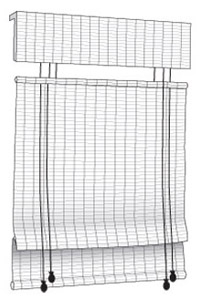 |

| |
TDBU shades have two sets of cords, one to lower and raise the top and one to raise and lower the bottom. The lift cords run through cord locks and under the head rail through pulleys and then down the back of the shade, where they are tied off either on the top rail or on the bottom ring of the shade.
TDBU shades are only available up to 72" wide. This is because the cord lock that operates the top bar operates under tension all the time and this can cause cord lock failures on wider shades.
This document identifies the main components of the TDBU shade. |
|
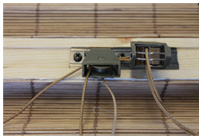 |

Head Rail
|
The TDBU shade head rail is 1 ½" wide and is made of wood.
The pulleys and cord lock required to operate the shade are screwed into the underside of the wood head rail.
At each end of the head rail are routed slots for the installation brackets. Wider shades may have routed slots in the length of the head rail for more installation brackets. |
|
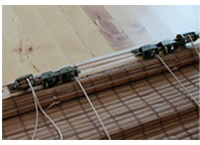
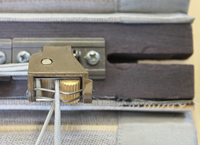
|

Brackets
|
Woven wood shades are installed using an L bracket with a screw post and a wing nut.
The bracket can be installed using the holes in the face of the bracket or the top.
The screw post of the bracket fits through the routed slot in the head rail and then the wing nut is screwed on to secure the head rail. |
|
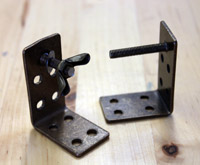 |

Cords
|
The number of lift cords depends upon the width of the shade and the pattern (softer patterns have more cords). Each cord has a tassel and a clear plastic cord stop.
The cord stop is a safety feature to stop the cord being pulled from the back to form a large, hazardous loop. The cord stop will not go through the cord lock, so it stops a loop being formed. |
|
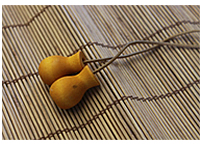
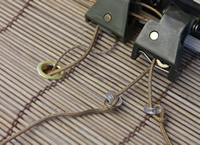
|

| |
The cords run down the back of the shade and down the back of the shade they are threaded through a cord shroud. The cord shroud is a safety feature and does not help the shade operate. The purpose of the cord shroud is to make the cords inaccessible, making sure that young children cannot pull the lift cord away from the shade and form a hazardous loop. |
|
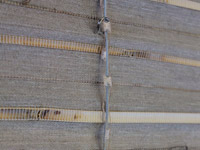
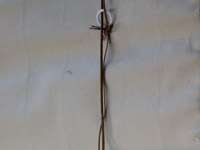
|

| |
TDBU shades are supplied with 2 cord cleats, which should be secured to the wall at the desired height, so that the cords can be wound up and kept out of the reach of small children. |
|
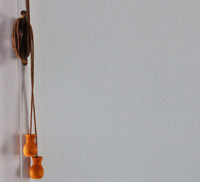 |

Cord Locks
Cord Locks have a plastic housing and brass gears, which grip the cords when engaged and hold the shade at the desired height.
To engage the cord lock (and lock the cords) the cords should be pulled away from the center of the shade.
To release the cord lock and allow the cords to move freely and lower or raise the shade, the cords should be pulled towards the center of the shade. |
|
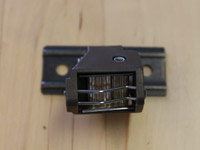 |

TDBU Shades with Liners
If a TDBU shade is ordered with a liner, the liner will come attached to the shade. The liner is attached with stitches down each side and where the rings are located on the back.
Liners are either Privacy or Black Out. Privacy Liners are the same color on each side. Black Out Liners are coated on the back and are either white or beige in color on the back.
If the liner has a different color on each side, the darker side will normally face the shade (to coordinate with the bamboo material), unless ordered reversed.
TDBU shades cannot be ordered with movable liners.
If a shade is ordered with a liner, the valance will be lined with the same color liner. |
|
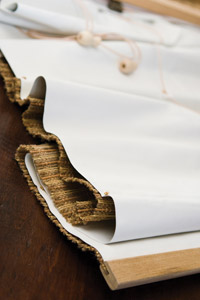 |

Edge Bindings
Edge bindings are 3" wide in total, or 1½" on the front and back of the shade.
The edge binding is attached by sewing it to the shade.
Edge bindings are applied to both edges of the valance and the shade and to the bottom of the shade. The corners are mitered. Edge bindings are applied to both edges of the valance and the shade and to the bottom of the shade. The corners are mitered. |
|
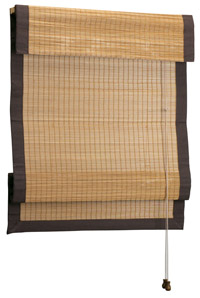 |
|